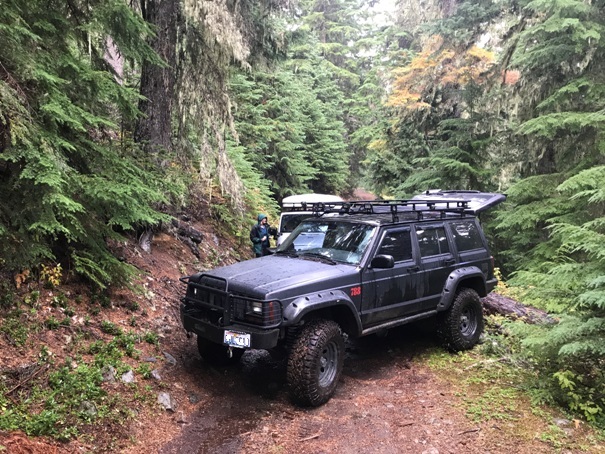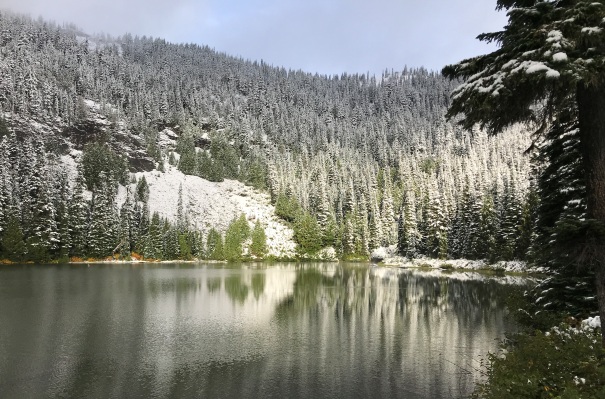

Copper City Trail
This trail is very narrow, with many tight spots and very few locations where vehicles can pass or even turn around. The trail itself is not difficult for a stock jeep. There are several small bridges and some fairly tight turns that will make it a bit more difficult for longer wheelbase rigs. At one spot about half-way up there is a short section over a talus slope with no trees available to stop a vehicle if it were to slide off the trail. The trail at this spot tilts you uncomfortably off-camber downhill and is not for the faint of heart. This trail has been adopted by the PNW 4WD Hombres Club who have spent years working with the Forest Service to restore this trail to its historic look.
WillhiteWeb.com: Washington
Distance: 2.4 miles from FR1808 (Deep Creek Road) to end of trail.
Highpoint: 5,100 feet
Take the Bumping River Road for 13.4 miles. Turn left on Forest Road 1808 and follow for about 6 miles.
Access:
Our Trail Video
Today all that remains of Copper City is the collapsed bunkhouse and the foundation of the mill. The remains of the bunkhouse are right along the road while you have to park and walk a short distance to see where the foundations of the mill. Copper City is just a few minutes drive up from the start of the trail. At the end of the trail is Clara Camp, along side a meadow. This camp had the cookhouse, and was the upper camp. All that is left of Clara Camp is a large pile of firewood, at the pit of a basement. A hiking trail continues up to Miners Ridge but you can drive to Miners Ridge on a different road access.
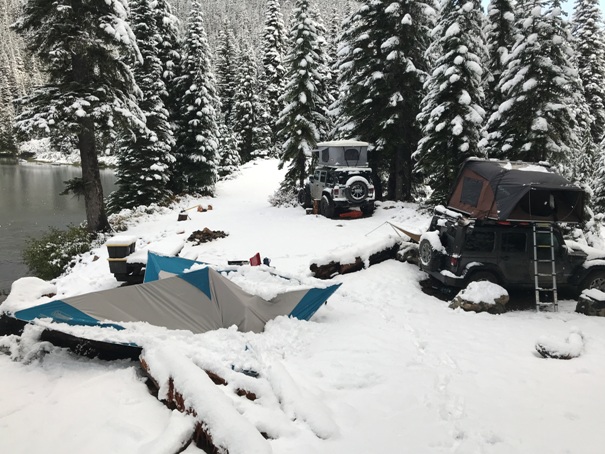
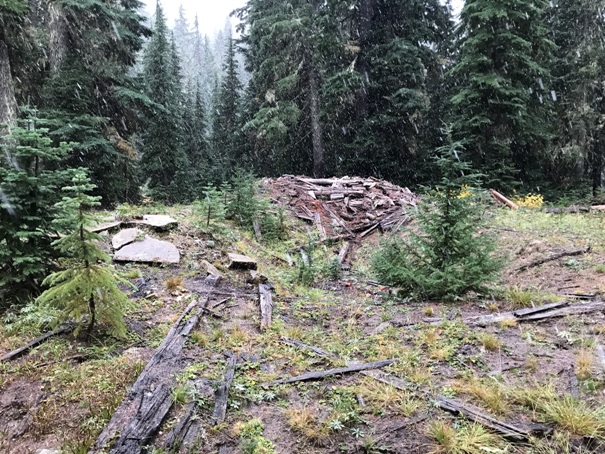
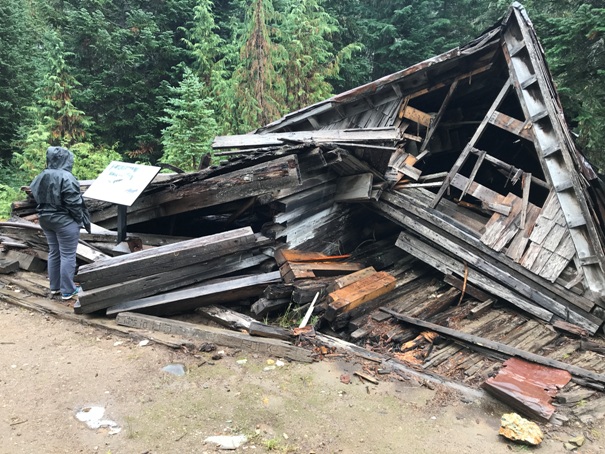
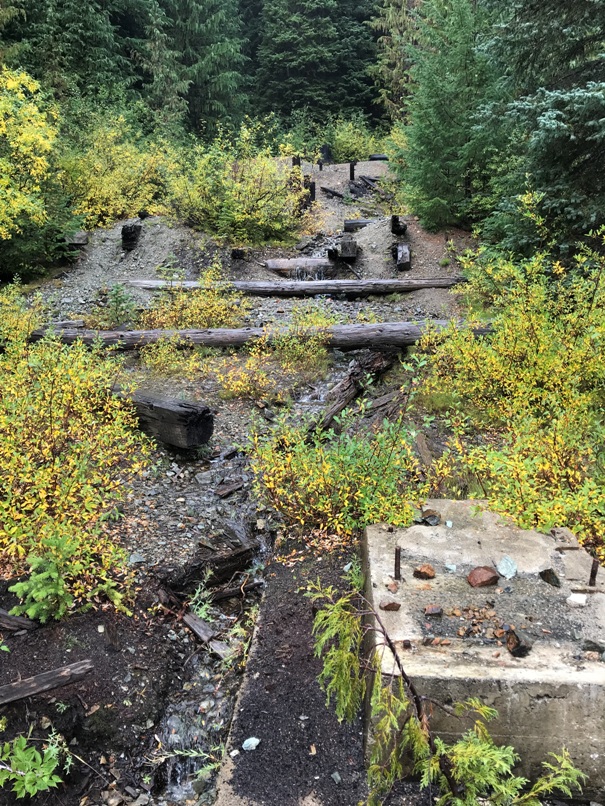
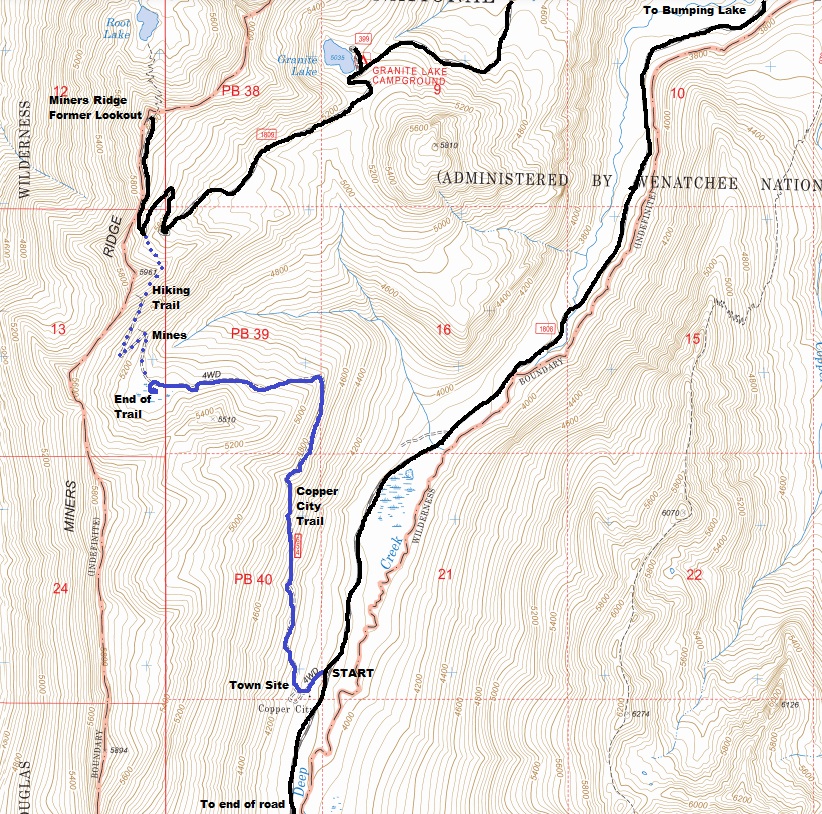
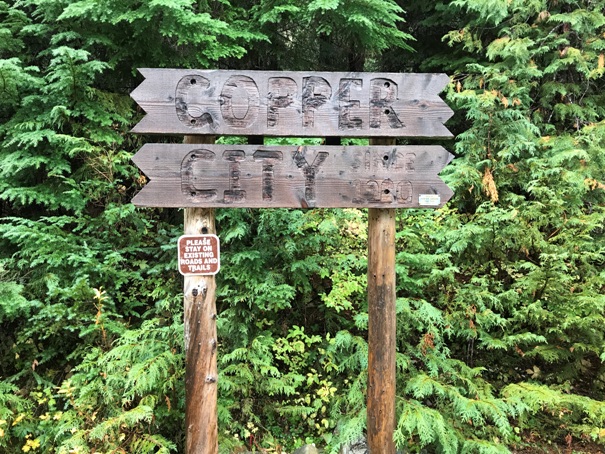
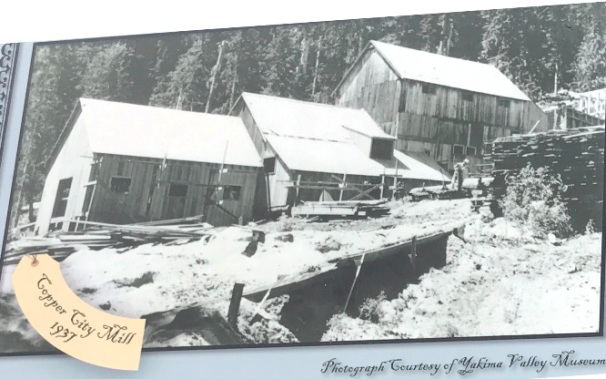
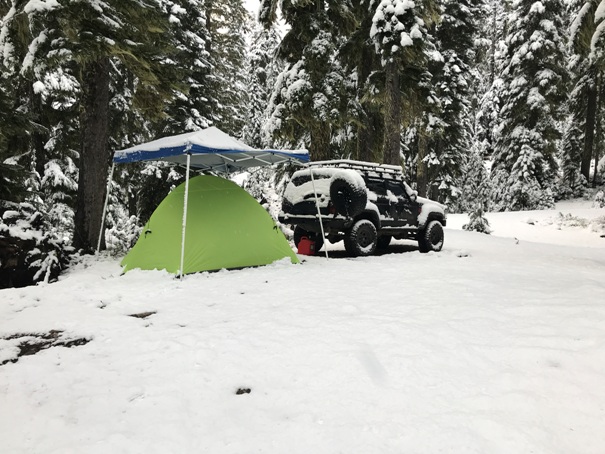
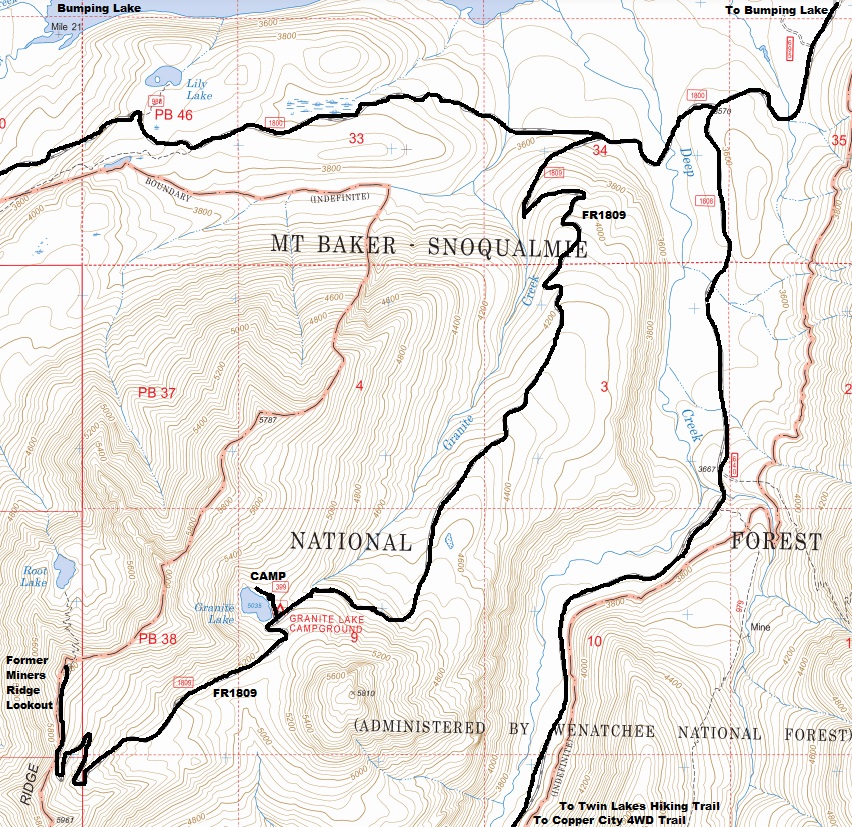
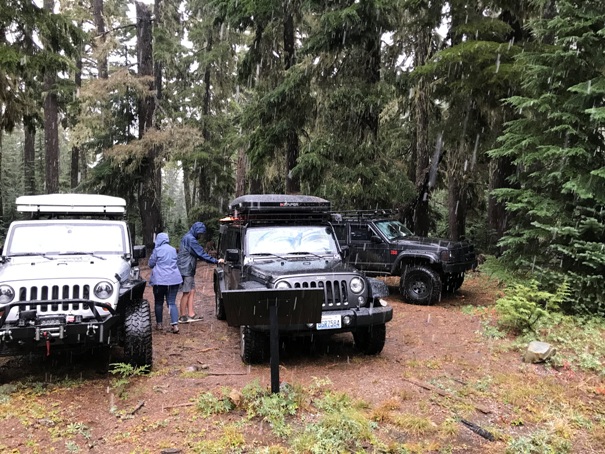
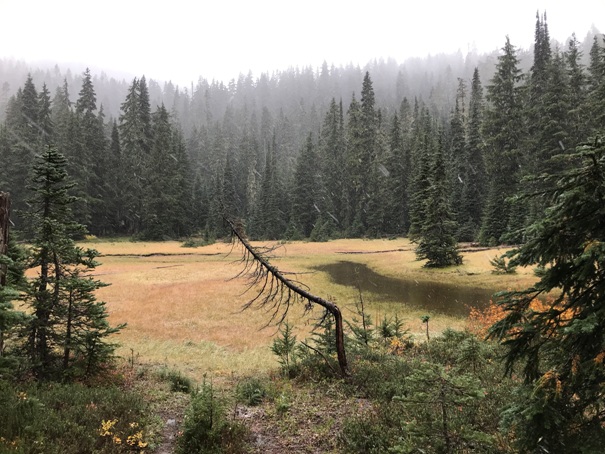

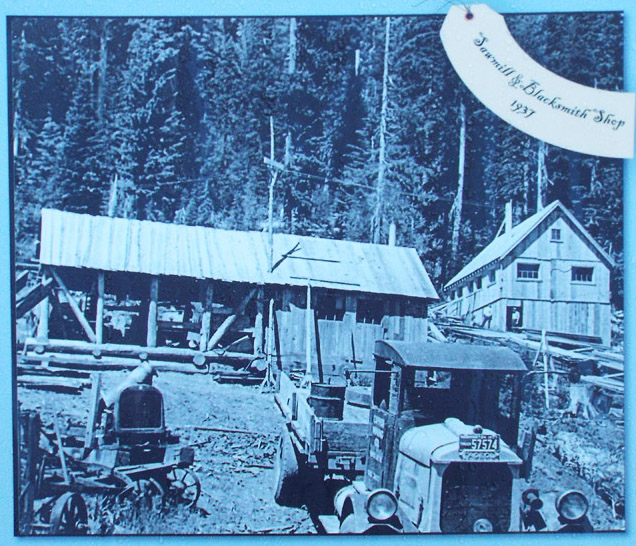
To the left are the remains of the mill that operated at Copper City for the first half of the 19th century. The mill was constructed to concentrate mineral bearing ore obtained from the many active claims on Miners Ridge higher in the mountains to the west. All the ore was transported by horse drown wagons, and later by truck, to the railroad in Naches for shipment to Tacoma where it was processed.
The haul route to Naches was a tedious 55 miles so miners wanted to ship only the highest-grade material possible. Mill machinery crushed the coarse ore and used gravity and water to separate heavier materials containing copper, silver and gold from the less-valuable host rock that was left on site. Operations at Copper City ended in 1942 and the mill machinery was eventually moved to another active mining centers in the state.
In the late 1890s James T. Simmons discovered signs of copper in the vicinity of Deep Creek. He filed a claim and turned it over to his son A.B. (Bud) Simmons in 1899. Bud decided the quartz was not rich enough to merit the expense of its extraction and liquidated his holdings in 1905 for 700. Ruben Root, the son of a mining engineer, bought in along with Mart Schichtol and Dan Sinclair. The men sold shares in the Copper Mining Company to raise money for machinery. Two years later the nearby Summit Copper Mining Company, with Dan Sinclair as president, incorporated with a stock of one million dollars. Ruben championed the mines and work began in earnest. Si Fletcher erected a sawmill to manufacture lumber for min timbers and buildings. Ruben built a road to Copper City from the end of the Reclamation Service road at Bumping Lake Dam. A phone line was strung to the mining center from the community of Goose Prairie. A mill, cabins, sheds and other support buildings were constructed. There were at least 40 miners living at Copper City at the height of operations by the late 1930s to 1940s.
The Copper Mining Company ultimately served 42 local claims including the Clara, Red Bird, New Find, Blue Bird and 17th of Ireland. The 160 tons of ore produced between 1917 and 1942 yielded 6,347 pounds of copper, 945 pounds of silver, 405 pounds of tungsten and 150 ounces of gold with a combined value of just over $20,000.
After investing nearly a quarter million dollars developing the Copper City mines, both money and hope had dissipated by 1942. Ruben gave up his dream and moved east to Milwaukee, Wisconsin where he passed away a few years later.
It was one of his first winters working the Copper City mines. Ruben Root was drilling rock when the bit broke and a steel fragment punctured his eye. He and a fellow miner strapped on their skis and began the long journey to town for treatment. The pain was unbearable and at times Ruben lost vision in both eyes. The men spent most evenings sleeping in the open since there were few cabins along the way and it took them all of eight days to reach Yakima.
The ruins in this meadow are from the cookhouse cabin built at Clara Mine, one of the many claims worked by Ruben Root and other investors with the Copper Mining Company between 1905 and 1942. It was here that the hungry miners returned for lunch one winter day to discover a cold cabin with no hot meal waiting. They begain to search and soon discovered the lifeless body of Tommy Amato beneath a jumble of wood and snow. A thick slab of ice slid off the cabin roof and collapsed the wood pile while the unsuspecting cook was gathering fuel for the stove. Goose Prairie resident Ira Ford used his dog team to sled the body out of the valley. Legend has it that Tommy eventually found his way home to Japan for burial.
Meadow at the end of the trail
Clara Mine cookhouse remains at the end of the trail
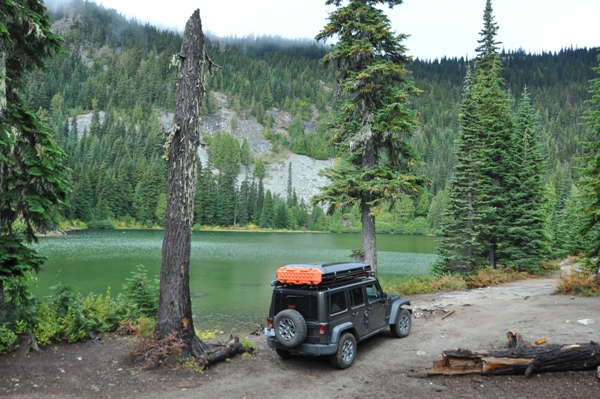


Our Camp Video
Map for the Copper City Trail
Map for Granite Lake Campground and former Miners Ridge Lookout Site
Camping at Granite Lake
Camping at Granite Lake
Sign at the start of the trail on Forest Road 1808
Foundation of the mill goes up a creek
Old pipe at the mill site
Working on the jeep in the trail
